6. Microwave Massacre (1983)
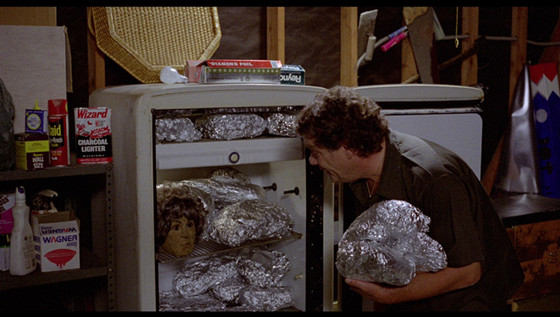
Jackie Vernon was a beloved comedian, best known for providing the voice of Frosty the Snowman in the classic 1969 Rankin/Bass TV special. Vernon’s laid-back delivery and self-deprecating material led to him being hailed as, “The King of Deadpan”.
In 1981,Vernon took the lead role in Wayne Berwick’s comedy-horror film, Microwave Massacre (Berwick initially sought Rodney Dangerfield, but his asking salary was too high). Vernon portrays Donald, a down-and-out construction worker. Life has become pure misery for Donald, largely thanks to his shrill, overbearing wife, May.
Their marriage is dissolving, but not due to emotional disconnection or blossoming mutual hatred; no, mainly it’s the food. May is a terrible cook and Donald can’t take her box lunches anymore, so he kills her, cooks her in their recently purchased microwave oven (which is roughly the size of a VW Bug), and has himself a feast.
As cannibalism is frequently addictive within the cinematic universe, Donald quickly develops a taste for human meat and takes to the streets in search of fresh flesh. Let me be clear: this may sound grisly, but it’s not. Wayne Berwick aims for comedy and his film is largely bloodless. It’s fairly smutty (there’s a good amount of nudity), but the horror elements are downplayed, dealt with in a deliberately silly manner.
The late, great Vernon appears very “out of it” for the duration (he’s almost certainly drunk). There are segments where he barely seems to know what’s going on, and his speech is constantly slurred. So many flubbed lines made it into Microwave Massacre that it has to set some kind of record (“I don’t remember leaving a wake-up hangover”…?). Art direction was provided by Robert A. Burns, a flat-out genius who built all the props used in The Texas Chainsaw Massacre; his color palette here is bright, garish.
Everything looks deliberately cheap and tacky, like it came directly off the clearance rack at Salvation Army. In all honesty, Microwave Massacre is aesthetically hideous, but intentionally so. It’s overall look could be referred to as, “pastel suburbia vomit“. Quite legitimately demented, down to its very essence, it‘s particular brand of weirdness never feels forced or manufactured. Why Microwave Massacre works, why it’s so bizarrely compelling, isn‘t easy to pinpoint. There’s just something about this film…
7. Junior (1985)
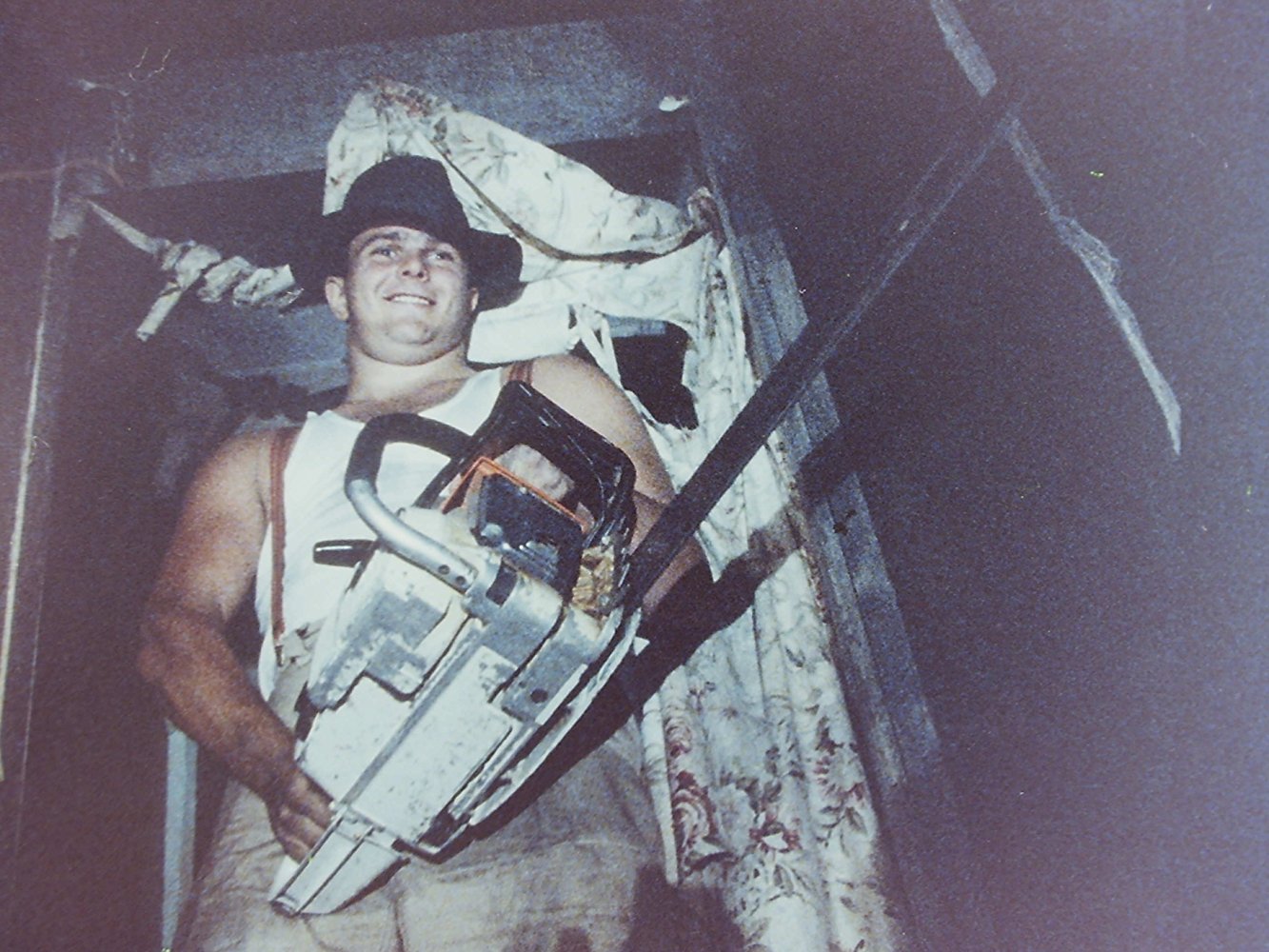
A movie with no idea of what it wants to be, Junior emerged in 1985 and immediately plunged into video obscurity. Marketed as a slasher film (the box art boldly declared, “Move over, Jason! Watch out, Freddy!”), it actually has more in common with backwoods thrillers like Gator Bait (1974) and Snake Eater (1989). Junior opens with K.C. and Jo, two former prostitutes, being released from prison. They purchase a run-down marina on a lake in rural Texas but are continually harassed by the redneck locals, namely a musclebound mamas boy named Junior.
It seems that Junior and his buddies (one of whom is the town sheriff) don’t care much for independent, attractive women running businesses and frequently sunbathing in the nude. Thoroughly cheap and dingy, Junior can never seem to decide if it’s a gritty revenge tale, a horror picture, or soft-core sleaze, so what we get is a unwieldy hybrid of all three.
Also released under the (somewhat more appropriate) title Hot Water, this Canadian production is structured and shot almost like pornography; it has a uniquely seedy vibe that (unintentionally) lends an offbeat sort of character, further enhanced by the fact that K.C. and Jo are in a near-constant state of undress. Violence is infrequent but sadistic, infused with a down-home viciousness: fishhooks, rusty chains, shotguns, worms, Molotov cocktails (K.C. assembles one using her bikini top at one point!), chainsaws, motorboats, nooses.
Artistry is at a bare minimum but there’s a boneheaded charm here, a look and feel that can’t be replicated, no matter how hard these current 80’s-throwback nostalgia films try. Junior has never been restored or re-mastered in any way: no DVD, no Blu-ray. In a visual sense, that’s maybe for the better: it’s a film that’s meant to be grainy and faded. The unfortunate downside of this, naturally, is that it’s astoundingly difficult to come by. Too quirky and memorable to be forgotten, Junior deserves to be unearthed by fans of alternative cinema.
8. Blood Diner (1987)
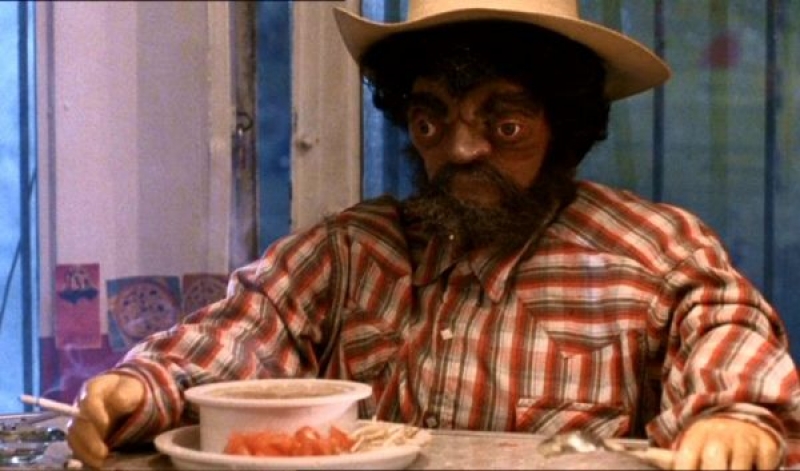
Jackie Kong’s Blood Diner was originally written as a continuation of Herschell Gordon Lewis’s Blood Feast, but later changed to be a standalone film. Shot in only three weeks, it tells the story of two brothers, Michael and George Tutman, proprietors of a popular health food restaurant and devoted servants to an ancient Lumerian goddess named Sheetar.
In order to resurrect their long-dead queen, the brothers must assemble an earthly vessel for her; they do so by murdering “immoral” young women and collecting their body parts. Positively loaded with wall-to-wall gore and nudity, Blood Diner is notable for having been directed by a woman, something that was (and still is) unusual within the male-dominated world of exploitation movies. Kong proves with ease that the ladies can get just as down and dirty as the men – she checks all the boxes, delivers everything one could want from a late-night trash epic.
Kong displays no sense of restraint or subtlety, no hesitance to go all out. Her picture is frequently quite funny, too: unlike countless horror-comedies, a large number of gags in Blood Diner earn genuine laughter.
As with many genre films of the era, it’s very much of it’s time, with references to aerobics, pro-wrestling, and extreme dieting. As is often the case, this dated quality adds immensely to the overall level of enjoyment. Blood Diner buzzes with relentless energy and holds surprises for even the most jaded of viewers; quite jarringly, the Tutman brothers are depicted at one point wielding automatic weapons while wearing Ronald Reagan masks (the use of guns in a movie like this is unusual).
Though technically a spiritual sequel to Blood Feast, this film actually has more in common with later, more intentionally comedic H.G. Lewis efforts like The Gore-Gore Girls and The Gruesome Twosome. There are plenty of graphic gore effects but they‘re exaggerated and cartoonish, never so grotesque that they detract from the humor. It’s a lighthearted film up to dark business.
Given a limited theatrical release in July of 1987, Blood Diner has managed to garner a minor cult following on VHS over the years. Thankfully, this one hasn’t been relegated to utter obscurity and can be seen with relative ease – Lionsgate gave the film a lovingly restored Blu-ray release in 2016. Every self-discerning fan of trashy cinema should have it on their shelf.
9. The Howling: New Moon Rising (1995)
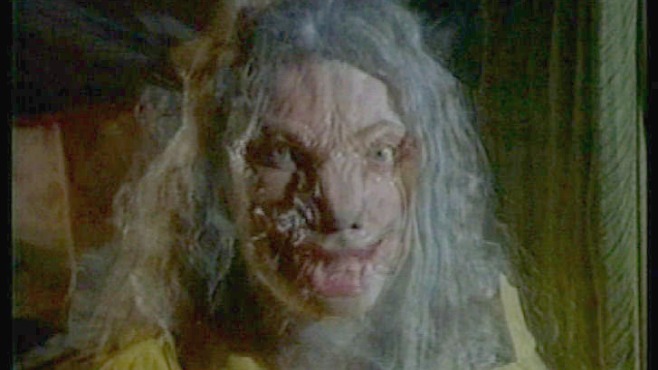
The Howling series lasted far longer than anyone could have expected. Joe Dante’s 1980 original led to Howling II: Your Sister is a Werewolf, which was written and directed by French-born artist Philippe Mora; Mora then returned to helm Howling III: The Marsupials.
The second and third Howling pictures are supremely strange and emphasize, even exaggerate the darkly comedic aspects of Dante’s work, something John Hough hoped to reverse when he stepped in to direct the fourth installment, The Original Nightmare. It is here, in 1988 during the pre-production of Howling IV, that the mysterious Clive Turner entered the picture.
Listed as a producer, Turner’s exact duties on Howling IV remain unclear (like virtually everything in the man’s life). Hough was convinced that Turner regularly faxed script re-writes to the set under the pseudonym Freddie Rowe. The first installment to go straight-to-video, IV was easily the worst in the series to date, yet it failed to derail the Howling train.
For Howling V: The Rebirth, Turner dug in deeper; in addition to a production credit, he’s also listed as co-writer. Despite the fact that V made little money and received largely terrible reviews, the franchise continued. Howling VI: The Freaks hit video store shelves in 1991, curiously missing the presence of Clive (this could account for the film being somewhat good).
Four years passed before Mr. Turner re-emerged with The Howling: New Moon Rising, and he entered with both guns blazing. In addition to taking the lead role, Clive wrote, directed, produced, and edited the seventh entry. Rarely have you seen these tasks performed so poorly.
To start, his movie has the visual sensibility of a Kidz Newz broadcast you’d see in an elementary school. Turner’s script doesn’t just go nowhere – it came from nowhere and never had any intention of leaving. It is nothing, zero, scrap paper, may never have even existed. Attempts at humor fall pancake-flat, every single one, and there are quite a few; comedic scenes are horrifying and horrific moments are hilarious (you’ve never seen a more laughable lycanthrope, and that‘s really saying something). Turner hasn’t a clue how to set a pace, achieve tension, or maintain any kind of tone.
The only movie on this list to rival The Meateater in terms of sheer ineptitude, Howling VII doesn’t feel like a film that was written, storyboarded, and rehearsed but rather like an extended goof, like we’re watching a bunch of grown people playing “Let’s Make A Movie” over the course of one long weekend. New Moon Rising is an astonishingly bad motion picture.
It should be widely known, the stuff of legend, simply because it’s so abysmal. Few filmmakers have failed as tremendously as Clive Turner did here. The man really accomplished something. How he managed to get major distribution for this glorious train-wreck of a film is anyone’s guess, but we should all be grateful that he did. It’s (surprise!) a tad rare these days.
10. The Dentist (1996)
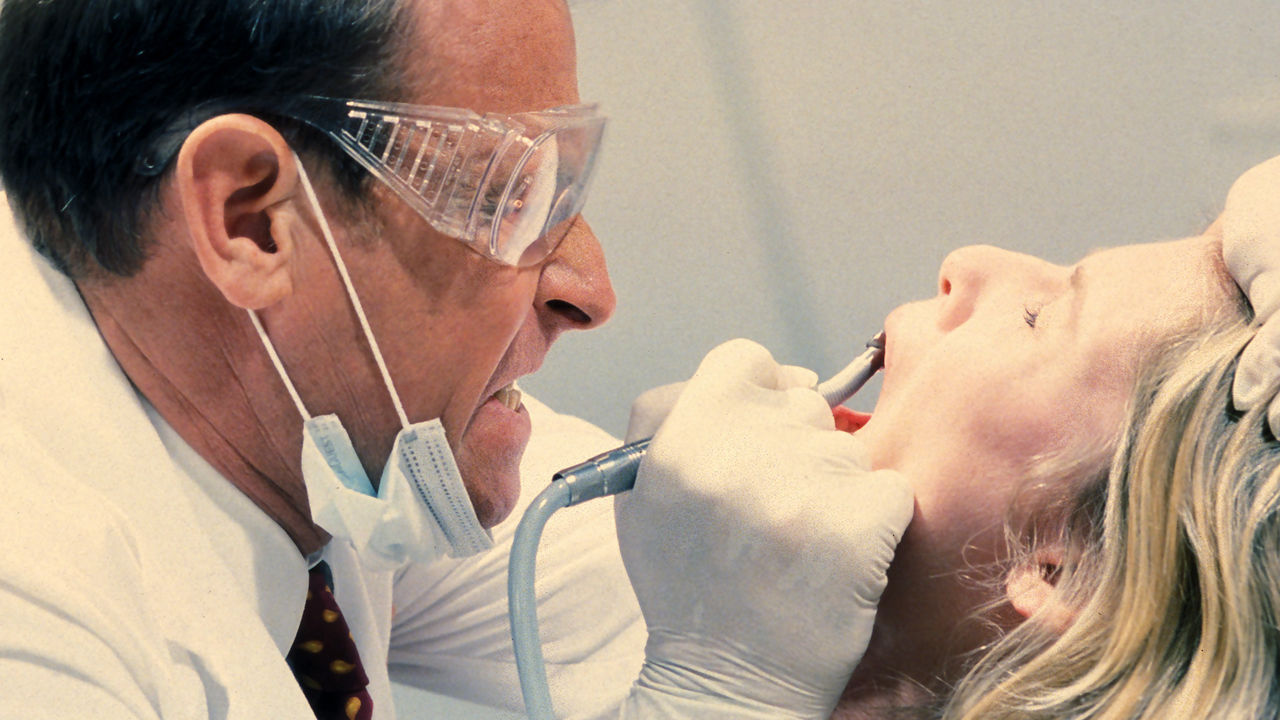
Alan Feinstone is a successful forty-something dentist with everything he could ask for: massive home, nice car, his own business, painfully beautiful young wife. Life is pure pleasure for Alan until, one morning, he catches his paramour having sex with the pool guy. Being a hardworking, diligent man who insists upon order and stability, such a flagrant violation of marital vows isn’t simply unacceptable for Feinstone; it‘s an unthinkable catastrophe. His mind snaps. His world shatters.
Suddenly everything appears filthy, corrupted, diseased. He feels an urge to lash out, to behave violently. Unfortunately, this mental breakdown occurs at the beginning of a typical workday – when Alan has a lobby full of patients waiting to see him. He can’t miss a work, can he? Absolutely not. He has a responsibility.
As the day progresses, Alan slips further into madness and what begins as general mistreatment of said patients soon grows into full-blown murder. Utilizing a variety of uncomfortably familiar dental devices, Feinstone turns his practice into a veritable slaughterhouse. For people even the least bit hesitant to lean back into a dentist chair, Brian Yuzna’s The Dentist is a cavalcade of terrors.
The true anchor here is Corbin Bernsen, an always-reliable actor who enters a really dark, ugly space as the demented Dr. Feinstone. While Yuzna is careful to maintain a sense of gallows humor, Bernsen handles his role with a great degree of believability. Beneath the horror posturing and occasional wisecracks, there is always the clear sense of a mind disintegrating; though his actions are outlandish, sometimes unbelievable, the slow crumbling of Alan’s sanity is never anything less than palpable. Bernsen swings for the fences and hits the moon.
Writers Dennis Paoli and Stuart Gordon (the minds behind Re-Animator, From Beyond, and Castle Freak) tap into a very common fear and never miss an opportunity to make the audience squirm. It’s hard to believe that the dentist’s office was basically uncharted territory for the horror genre in 1996; prior to Yuzna‘s film, the screen hadn’t really seen too many fiendish dentists outside of Little Shop of Horrors and Marathon Man. Perhaps it was an oversight, or maybe people just felt that no one would care to see an entire film about a dentist inflicting pain with all manner of shiny, poky things.
Production on The Dentist was quick and cheap, with shooting taking only 18 days; Feinstone’s office was a constructed set built on a studio lot. Frequent John Carpenter collaborator Alan Howarth capably handled scoring duties (curiously, a cue from the 1986 film House, scored by Harry Manfredini, is used at one point). Yuzna’s The Dentist is a flat-out blast. Fun fact: Corbin Bernsen owns one of the world’s largest snow globe collections.
Author Bio: Derich Heath is a writer, musician, and filmmaker who lives in Los Angeles. He is currently in post-production on his debut feature, Midnight Oil.